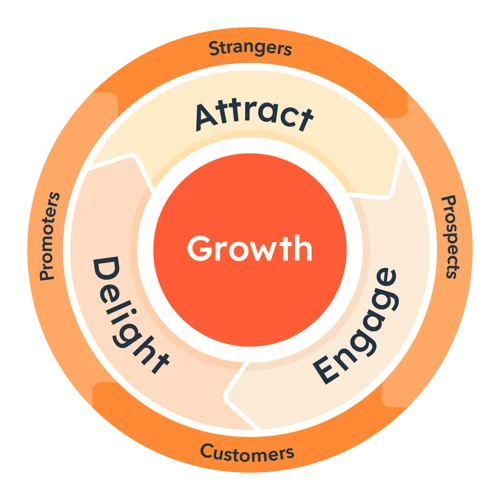The Marketing Funnel

The marketing funnel is a framework outlining the customer journey from awareness to advocacy. It helps brands connect with customers at different stages, aiming to guide them towards purchase and brand advocacy.
Importance of the Funnel
Despite the non-linear nature of today’s customer journey, the funnel remains crucial for understanding how to engage customers at each stage—awareness, interest, consideration, conversion, retention and advocacy.
Stages Explained
- Awareness: This is the broadest part of the funnel. It’s where you attract attention to your brand, product, or service. At this stage, people might become aware of your offering through advertising, social media, content marketing, or word of mouth.
- Interest: Once people are aware of your brand, they move to the interest stage. Here, they start actively seeking more information about what you offer. They might sign up for newsletters, follow you on social media, or engage with your content.
- Consideration: In this stage, potential customers are evaluating whether your product or service is right for them. They’re comparing you to competitors, reading reviews, and possibly engaging with your sales team.
- Conversion: This is where the actual purchase happens. The potential customer decides to buy your product or service. It could be a one-time purchase or the beginning of a long-term relationship.
- Retention: After making a purchase, the goal is to keep customers coming back. This stage involves providing excellent customer service, engaging with them through email or social media, and offering incentives for repeat purchases.
- Advocacy: The final stage of the funnel involves turning satisfied customers into brand advocates. These are people who love your product or service and actively recommend it to others. Word of mouth and referrals can be incredibly powerful at this stage.
Marketing vs. Sales Funnel
The marketing funnel focuses on generating leads and brand awareness, while the sales funnel targets closing deals and fostering repeat purchases. The marketing funnel is often considered as top-of-funnel.
Full-Funnel Approach
Integrating a full-funnel strategy involves reaching customers across various touchpoints and channels, optimizing engagement at every stage of their journey. This holistic method helps in understanding and influencing customer behavior more effectively.
Why are marketing funnels crucial?
While the customer journey is far from straightforward, the concept of the marketing funnel remains vital. In today’s digital landscape, where consumers freely navigate between platforms and locations, the traditional linear path no longer suffices. Instead, the digital marketing funnel acknowledges this dynamic movement, accommodating consumers’ fluidity as they explore various options online.
Brands must strategize on engaging customers across all phases of their journey. The consideration phase, once confined to in-store product comparisons, now extends to extensive online research and evaluation. Brands adapting to this non-linear path capitalize on authentic interactions with customers throughout the funnel.
Marketing funnels serve a dual purpose: lead generation and nurturing. During the awareness and consideration stages, brands attract new leads through targeted campaigns. Subsequently, in the decision and loyalty phases, campaigns nurture existing leads, fostering their progression into loyal customers and advocates. Digital marketing, intertwined with the marketing funnel, plays a pivotal role in discerning which channels, strategies, and content drive attention, engagement, and ultimately, sales for the brand.
The Hubspot Flywheel Marketing Funnel Concept

The HubSpot Flywheel model revolutionizes the traditional marketing funnel concept by emphasizing the importance of customer experience and satisfaction. Unlike the funnel, which portrays customers as the endpoint of a linear process, the flywheel views them as the central force driving business growth. At its core, the flywheel model focuses on three key stages: attract, engage, and delight.
In the attract stage, businesses strive to draw potential customers through various inbound marketing strategies such as content creation, search engine optimization, and social media engagement. By providing valuable and relevant content, companies aim to capture the attention of their target audience and initiate meaningful interactions.
Once prospects are attracted, the engage stage comes into play, where the emphasis shifts towards building strong relationships and nurturing leads. Through personalized communication, targeted campaigns, and responsive customer service, businesses aim to establish trust and credibility, encouraging prospects to move further along the flywheel.
Finally, in the delight stage, the focus is on exceeding customer expectations and fostering loyalty. By delivering exceptional experiences, addressing customer needs promptly, and soliciting feedback, companies aim to turn satisfied customers into enthusiastic promoters who advocate for the brand and fuel ongoing growth. Overall, the HubSpot Flywheel model underscores the importance of placing the customer at the center of the business strategy, recognizing that their satisfaction and loyalty are essential drivers of sustainable success.
